![]()
![]()
![]()
Use LEFT and RIGHT arrow keys to navigate between flashcards;
Use UP and DOWN arrow keys to flip the card;
H to show hint;
A reads text to speech;
19 Cards in this Set
- Front
- Back
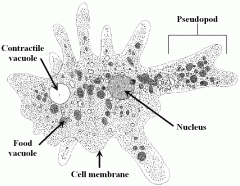
Amoeba
|
Domain: Eukarya
Kingdom: Plantae Motility: Pseudopodia Cellularity: Unicellular Reproduces asexually through cytokinesis or mitosis. Food: Heterotrophic |
|
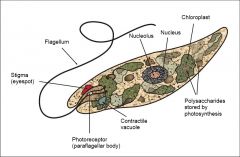
Euglena
|
Domain: Eukarya
Kingdom: Excavata Motillity: Flagella Cellularity: Unicellular Reproduces asexually through binary fission Food: Can be autotrophic and heterotrophic |
|

Paramecium
|
Domain: Eukarya
Kingdom: Chromalveolata Motility: Cilia Cellularity: Unicelluar Reproduces asexually through binary fission Food: Heterotroph |
|
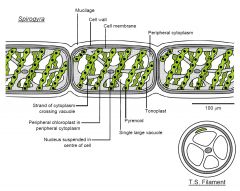
Spirogyra
|
Domain: Eukarya
Kingdom: Protista Motility: Moves through waves Cellularity: Multicellular Reproduces asexually through vegetative reproduction and sexually, Food: Autotroph |
|
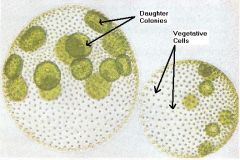
Volvox
|
Domain: Eukarya
Kingdom: Plantae Motility: Flagella Cellularity: Colonial and unicellular Reproduces: Asexullay Food: Autotroph |
|
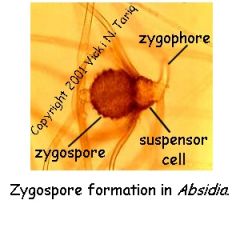
Zygomycota
|
Domain: Eukarya
Kingdom: Fungi Phylum: Zygomycota Motility: Grows towards food Cellularity: Multicellular Reproduces asexually and sexually Food: Heterotroph |
|
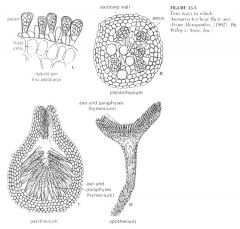
Ascomycota (Sac/Cup Fungi)
|
Domain: Eukarya
Kingdom: Fungi Phylum: Ascomycota Motility: Grows toward food Phyletic: Monophyletic Cellularity: Multicellularity Reproduces asexually and sexually Food: heterotrophic |
|
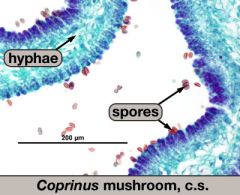
Basidiomycota (Club Fungi)
|
Domain: Eukarya
Kingdom: Fungi Phylum: Basidiomycota Motility: Grows towards food Cellularity: Multicellular Reproduces sexually and asexually Food: Heterotroph |
|
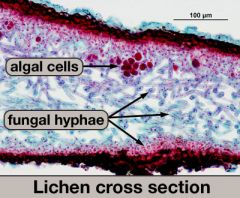
Lichen
|
Domain: Eukarya
Kingdom: Fungi Motility: Grows toward food Cellularity: Multicellular Reproduces sexually and asexually Food: Heterotroph |
|

Moss Antheridia and Archegonium
|
Domain: Eukarya
Kingdom: Plantae Division: Bryophyte Vascularity: Non-vascular Cellularity: Multicellular Reproduces: Asexually or sexually Sperm gets to egg by swimming through water Food: Autotroph Lack seeds or flowers Spends time in mostly gametophyte stages Antheridia- Male gametes, oval shaped Archegonium- Female gametes, vase shaped |
|
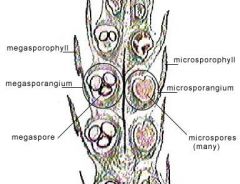
Selaginella
|
Domain: Eukarya
Kingdom: Plantae Division: Bryophyte Vascularity: Nonvascular Cellularity: Multicellular Reproduces sexually Heterosporous, they have meagaspores and microspores Food: Autotroph |
|
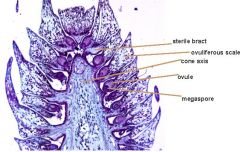
Pine Ovulate Cone
|
Domain: Eukarya
Kingdom: Plantae Vascularity: Vascular Cellularity: Multicellular Reproduces sexually Food: autotroph Contains megaspore and female gametophytes. |
|
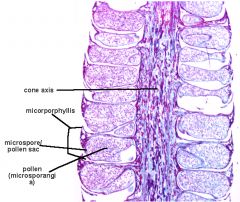
Pine Staminate Cone
|
Domain: Eukarya
Kingdom: Plantae Vascularity: Vascular Cellularity: Multicellular Reproduces sexually Food: autotroph Contains microspores and male gametophytes. |
|
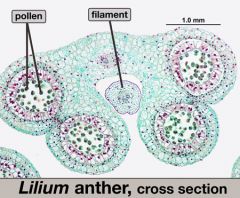
Lily Anther
|
Domain: Eukarya
Kingdom: Plantae Vascularity: Vascular Angiosperm Cellularity: Multicellular Reproduces sexually Food: autotroph Contains pollengametophytes |
|
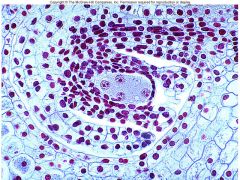
Lily Embryo
|
Domain: Eukarya
Kingdom: Plantae Vascularity: Vascular Cellularity: Multicellular Reproduces sexually Food: autotroph Contains megagametophyte, egg, ovule |
|
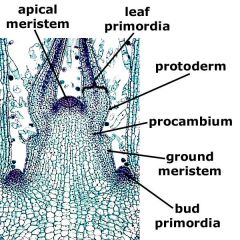
Coleous Stem
|
Apical Meristem- place of plant growth
Leaf primordia- group of cells that will develop into a leaf Bud primordia-will form auxillary buds that might develop into branches |
|

Herbaceous Dicot Stem
|
More organized.
Netted Veins Two cotyledons on seeds Flower parts in multiples of 4 and 5 |
|
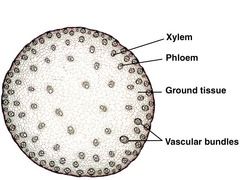
Herbaceous Monocot Stem
|
Less Organized
Parallel Veins One cotyledon on seeds Flower parts in multiples of 3 |
|
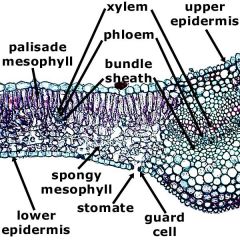
Syringia Leaf
|
Angiosperm
somata- controls entering/leaving of water vapor, CO2 and air in leaves guard cells- regulates size of opening from stomata and are on underside of leaf |

